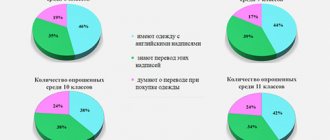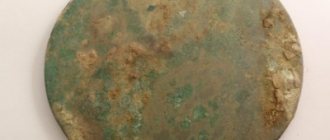The history of the postcard
The appearance of the postcard was largely caused by purely practical needs, and even today it, without losing its original function, is one of the types of postal communication, although it is not widespread due to the availability of higher-speed options for transmitting information. Nowadays, the functions of the postcard have changed somewhat, and we perceive it mainly as an attribute of a holiday and congratulations.
A postcard, or, to put it completely, an open letter, or, as it was sometimes called at the end of the 19th - beginning of the 20th century, an “artistic card”, meaning the presence on the postcard of any image, something that was created by artists, does not have one , a precisely defined date of birth. This process had many lines and directions of development, and plenty of time passed before the postcard took on a more or less familiar form today.
The Chinese have their own version of the history of the postcard. According to her, postcards evolved from business cards, the culture of which was very common in Ancient China. According to the Chinese etiquette of that time, if a visitor was unable to find the person he wanted to congratulate, he was supposed to leave his business card with holiday wishes written on it on his doorstep.
In France, one of the first mentions of greeting cards dates back to 1777, when the Paris Postal Almanac reported that “engraved cards, often with text, are sent by mail as greetings and congratulations on a variety of occasions; they are sent open to everyone.” The author of this invention is the engraver Demaison. The postcards themselves from this period have not survived to this day. At the same time, engraved cards like our address and advertising cards, which were created by the 18th century French engraver Chauffard, a famous draftsman and illustrator of works, became widespread in France.
Propaganda postcard mailed a few weeks after the fall of the Paris Commune (July 1871)
The earliest greeting card, kept by the British Museum in London, dates back to the 15th century, that is, the time of the beginning of printing in Europe. It is dedicated to the feast of St. Valentina. Its creation is attributed to the Duke of Orleans. While in prison, he wrote love letters to his wife. At the beginning of the 19th century, greeting cards dedicated to Easter, Christmas, and St. Valentine's Day began to be used in England. Patrick. Not all of them were sent by mail, but still they were already postcards, if by them we mean “open letters.” In 1795, a series of Christmas cards was released, based on drawings by the English artist Dobson. And five years later they were already openly sold in stores along with notepaper.
One of the first Christmas cards. The titographically printed and hand-painted postcard dates back to 1843. It depicts a family gathered at a festive table. The postcard is one of ten that have survived to this day from a circulation of one thousand copies.
Further events unfolded in Germany. In November 1865, at the German postal conference, the Prussian postal adviser Heinrich von Stefan proposed issuing an open "postal leaflet", with one side intended for the address and the other for text. But this proposal was rejected. Two years later, two more similar projects emerged. One was from the Leipzig bookseller Friedlein, who asked the postal department for permission to issue a “universal correspondent card”, the second version belonged to the Leipzig one, which recommended postal officials to issue a “universal correspondent card”, on one side of which the address was located, and on the other it was supposed to place thirty phrases, among which included various congratulations, words of condolences, and short notices. From all this, a person could choose the desired text option and cross out everything else. The reason for such interest in postcards in Germany was quite practical. These cards, as printed works, were paid not at the expensive postal rate, but at a lower parcel rate, since they were not letters. But both such cleverly conceived projects were rejected because postal workers did not want to lose money.
German postcard dated 1898.
The story continued in Austria-Hungary. In January 1869, Professor of Economics at the Military Academy in Vienna, Emmanuel Hermann, reported in one of the newspapers about the “correspondent card” he had invented. The author of this version proposed limiting the text of the letter to twenty words, including the address and signature. The professor's proposal was accepted by the Austro-Hungarian government, except for the limitation of the text, since in order to count the words it was necessary to maintain a significant number of postal employees. Thus, on October 1, 1869, a “correspondent card” was issued with a printed stamp in denomination of two kreuzers. This was the first postcard. At first, fearing prying eyes, many individuals and especially companies avoided using open letters, but little by little the public got used to them, and postcards became increasingly widespread as they began their journey around the world. In 1871, the postal departments of England, Switzerland, Luxembourg, Belgium, Denmark, and the Netherlands began selling them; in 1872, Sweden, Norway, and Ceylon joined them; in 1873, France, Spain, Romania, Serbia, and Chile; and in 1874, Italy.
Children from different countries. Series of postcards from 1879
In Russia, open letters were put into circulation on January 1, 1872. They were not illustrated. On one side of the postcard the address was written and a stamp was pasted; the rule was also printed here: “On this side, besides the address, nothing else is allowed to be written.” The second side was intended for a written message, on it was placed the inscription: “The Postal Administration is not responsible for the contents of the letter.” Russian postcards were of different colors. The earliest are grayish-white, then in May 1872, three types of postcards appear: universal - black, which could be sent both within the city and to other cities, depending on the price of the stamp attached; brown ones are for sending within the city and green ones are for out-of-town shipments. On October 19, 1894, the Russian Minister of Internal Affairs authorized the production of “privately produced open letter forms.” Until this time, the monopoly right to issue open letters belonged to the postal department.
The first illustrated postcards in Russia are considered to be photographic postcards depicting the sights of Moscow. There is a known series of five such postcards, on which there is an inscription that allows them to be dated: “Allowed by censorship. Moscow. November 18, 1895." Among the first Russian publishing houses to produce illustrated postcards in Russia, one should name the “Committee for the Care of the Sisters of Mercy of the Russian-Turkish War,” better known as the “Community of St. Eugenia.” This organization played an exceptional role in the formation and development of Russian postcards at the beginning of the 20th century. The publishing group of the Community of St. Eugenie produced the first postcard in 1898.
After the revolution, in the Soviet Union, postcards were first declared a bourgeois prejudice, but over time their production began again, so we all remember the wonderful postcards dedicated to such holidays as the New Year, February 23, March 8, Victory Day, and May 1.
Now you know the rich and interesting history of the origin of the modern postcard. And the next time you get ready for a holiday, don’t forget to buy or make a postcard, and I will be happy to help you with this.
Sources:
www.mirpoz ru/ru/publications/history/detail.php?BID=31&ID=1117
www.vlasta-tula ru/articles/show-22.htm
www.mirpoz ru/ru/publications/history/detail.php?BID=31&ID=1093
Postcard history. Research
Slide 1
Topic: “History of the postcard” The work was completed by: Alina Ruslanovna Khalitova, student of the secondary educational institution “Secondary School No. 68” 4 “B” class Research work.
Slide 2
Goal: to study the history of the postcard as a cultural heritage of the past, to explore new interesting forms of the author's direction in the development of postcards. Objectives: - study and analyze literature on the chosen topic; - understand the fate of postcards in the era of speed, the Internet and e-mail; — to explore the attitude of students in grade 4 “B” of municipal educational institution “Secondary School No. 68” to the postcard as a form of congratulations; - create a postcard with your own hands.
Slide 3
The science of deltiology studies the history, aesthetics and symbolism of postcards. Scientists, studying the postcard, are trying to comprehend the phenomena of social consciousness of past eras. The appearance of the postcard was largely due to purely practical needs. Today, the functions of a postcard have changed; we perceive it mainly not as a type of postal service, but as an attribute of a holiday and congratulations.
Slide 4
A postcard is, as a rule, a bright, picturesque picture designed to improve the mood of the person for whom it is intended. These can be reproductions of famous paintings, or just funny pictures and applications. The subtext is also important in a postcard - it is in it that those thoughts are expressed that are sometimes difficult to express in words.
Slide 5
A postcard (originally an open letter) is a special type of postcard for an open letter (without an envelope). Greeting cards were the first in history. The earliest postcard that has come down to us is the “Valentine”. This greeting card is kept by the British Museum in London; it dates back to the 15th century, that is, the time of the beginning of printing in Europe. The postcard is dedicated to the feast of St. Valentina. Its creation is attributed to the Duke of Orleans.
Slide 6
The first printed Christmas card, according to some sources, was a greeting card designed in 1840 by order of Sir Henry Cole.
Slide 7
The first postcards were issued on September 22, 1869 by the Austrian government. These were pieces of thick yellow paper measuring 123*88 mm with a lemon-yellow postage stamp in the right corner. There were no drawings on these postcards.
Slide 8
In Russia, open letters were put into circulation on January 1, 1872. They were not illustrated. On one side of the postcard they wrote the address and stuck a stamp on it, and the rule was also printed here: “On this side, besides the address, you are not allowed to write anything else.” The second side was intended for a written message, on it was placed the inscription: “The Postal Administration is not responsible for the contents of the letter.” Russian postcards were of different colors.
Slide 9
In 1894, the Russian Minister of Internal Affairs allowed the production of privately produced open letter forms - before that, the monopoly right to issue open letters belonged to the postal department. The first illustrated postcards in Russia were photographic postcards depicting the sights of Moscow.
Slide 10
Among the subjects of Christmas and New Year cards, images of old Russian fortune-telling, pine forests and snow-covered peasant huts, golden-domed churches, Father Frost and the Snow Maiden on a dashing three horses, cheerful children and beautiful angels prevailed. The revival of postcards in Russia began in the 90s. Publishing houses specializing in the production of postcards appeared, which continued the history of artistic postcards in Russia, and brought them to a new level of ideas and quality of production.
Slide 11
The revival of postcards in Russia began in the 90s. Publishing houses specializing in the production of postcards appeared, which continued the history of artistic postcards in Russia, and brought them to a new level of ideas and quality of production.
Slide 12
The concept of “cardmaking” (cardmaking) translated from English means the following: card – card, postcard, make – to do, to make. We combine two words and get: “Making postcards.” Cardmaking is a craft, a direction in art, a type of creativity and a hobby. Cardmaking involves the manual production of postcards.
Slide 15
Sources: 1. Postcard May 1st. https://www.tunnel.ru/i/post/350436/3504365638/2063834783/at207589561.jpg 2. Modern postcard. https://1.bp.blogspot.com/_RmFmSRm6UtE/TLrr26x0HoI/AAAAAAAAAQc/e9wNrOFTp6M/s1600/%D0%98%D0%B7%D0%BE%D0%B1%D1%80%D0%B0%D0%B6 %D0%B5%D0%BD%D0%B8%D0%B5+236.jpg 3. Christmas. https://forum-antikvariat.ru/uploads/monthly_01_2015/post-65649-0-06260000-1420568966_thumb.jpg 4. Valentine. https://lipetsk.ru/upload/medialibrary/c57/c57346c149f448bc839972c52b94df8f.jpg 5. Reproductions of paintings. https://meetheslavs.com/wp-content/uploads/2014/06/Ivan_Shishkin_-_%D0%A0%D0%BE%D0%B6%D1%8C_-_Google_Art_Project.jpg 6. Snow Maiden. https://cp14.nevsepic.com.ua/231/23033/1396479222-1-155.jpg 7. New Year's card. https://pavlodolschool1.ucoz.ru/111/93839770.jpg
Slide 16
8. First of September. https://cdn-frm-eu.wargaming.net/wot/ru/uploads/monthly_08_2015/post-5867872-0-96066600-1441017737.jpg 9. Valentine. https://www.zhiryatinskiy-kray.ru/ardzon/files/samij-sladkij-den-1761.jpg 10. https://img17.vkrugudruzei.ru/images/011/968/00/oi_fc25149125cd49b7abfaaf57fa683ea9_big.jpg Christmas card 11. https://kaztv.kaztrk.kz/images/news/5394f00c66d5740fa9cc973f0f5245f3.jpg first postcards 12. https://cs413129.vk.me/v413129677/46f2/e3ghxpfBP2c.jpg image of Moscow 13. https://im 0 -tub-ru.yandex.net/i?id=d87a51aaf7fa58bf34f2b135d0d29c1a&n=33&h=190&w=254 birds 14. https://golden50.ru/files/1/600/492.jpg open letter








